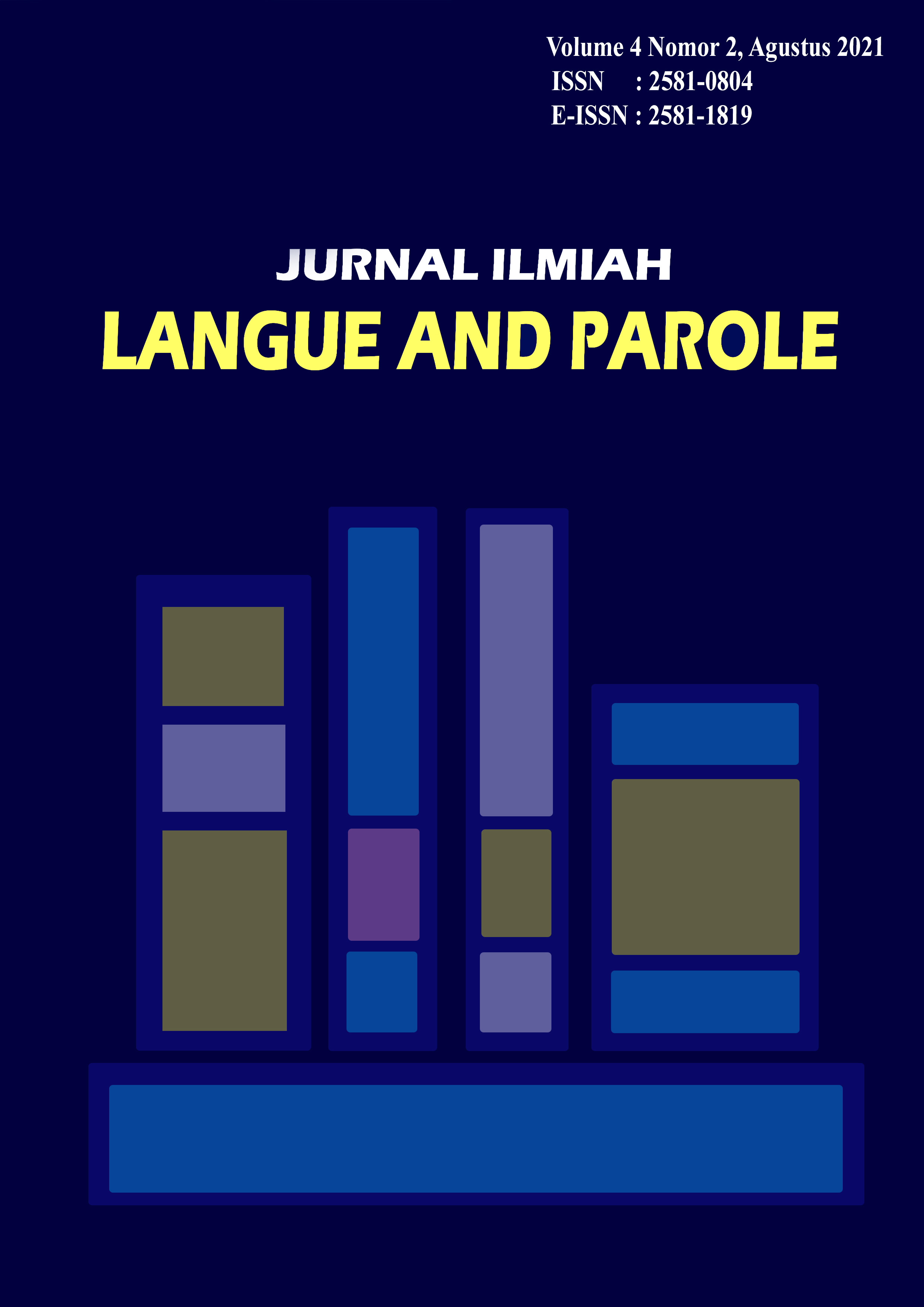Gaya Bahasa Pada Pernyataan Penutup Najwa Shihab Dalam Gelar Wicara “Mata Najwa” di Trans 7
DOI:
https://doi.org/10.36057/jilp.v4i2.482Keywords:
Language style, Speech degree, Mata NajwaAbstract
This research aims to describe the style of language in the closing statement of NajwaShihab on the talk show "Mata Najwa" in Trans 7. This type of research is a qualitative research using a descriptive approach. The data of this research is in the form of NajwaShihab's speech in the closing statement in the talk show "Mata Najwa" which contains language style. The data source for this research is the video recording of Mata Najwa's talk show on Trans 7 March - April 2020 edition. The video was taken on the Narasi Newsroom Youtube Channel. The methods and techniques used at the stage of providing the data are the listening method with tapping techniques and advanced listening techniques, free involvement, conversation and notes. At the stage of data analysis, the method used is the matching method with the technique of sorting the determining elements, while at the stage of presenting the results of data analysis, the method is used the informal method. The language styles found in NajwaShihab's closing statement on the talk show "Mata Najwa" in Trans 7 are hyperbole, personification, metaphor, synecdoche (totem pro parte), association, euphemism, anaphora, epanolepsis, epizeuksis, cynicism, innuendo, sarcasm, paradox, antithesis, and repetition. Repetition is the most dominant language style found in this research (in all data). The repetition in question is in the form of repeating phonemes at the end of the sentence (having a rhyme/rhyme "aa"). Each row in the data has a pair, namely odd and even rows (eg rows 1 and 2, 3 and 4, and so on).
Downloads
References
Keraf, Gorys. (2008). Diksi dan Gaya Bahasa. Jakarta: Gramedia Pustaka Utama.
Kridalaksana. (2008). Kamus Linguistik. Jakarta: Gramedia Pustaka Utama.
Moloeng, J. Lexy. (2010). Metodologi Penelitian Kualitatif (Edisi revisi). Bandung: PT Remaja Rosda Karya.
Pusat Bahasa Departemen Pendidikan Nasional. (2007). Kamus Besar Bahasa Indonesia Edisi Ketiga. Jakarta: Balai Pustaka.
Ratna, Nyoman Kutha. (2010). Teori, Metode, dan Teknik Penelitian Sastra.Yogyakarta: Pustaka Pelajar.
Tarigan, Henry Guntur. (2009). PegajaranGaya Bahasa. Bandung: Angkasa.
www.trans7.co.id. (2020, 16 Juni). Mata Najwa. Diakses pada16 Juni 2020 dari https://www.trans7.co.id/programs/mata-najwa/
id.wikipedia.org. (2020, 16 Juni). Gelar wicara. Diakses pada 16 Juni 2020 dari https://id.wikipedia.org/wiki/Gelar_wicara/
id.wikipedia.org. (2020, 16 Juni). Mata Najwa. Diakses pada 16 Juni 2020 dari https://id.wikipedia.org/wiki/Mata_Najwa/
liputan6.com (2020, 17 Juni). Cantik dan Pintar, Ini Perjalanan Karier Najwa Shihab. Diakses pada 17 Juni 2020 darihttps://www.liputan6.com/bisnis/read/3052100/cantik-dan-pintar-ini-perjalanan-karier najwa-shihab/








